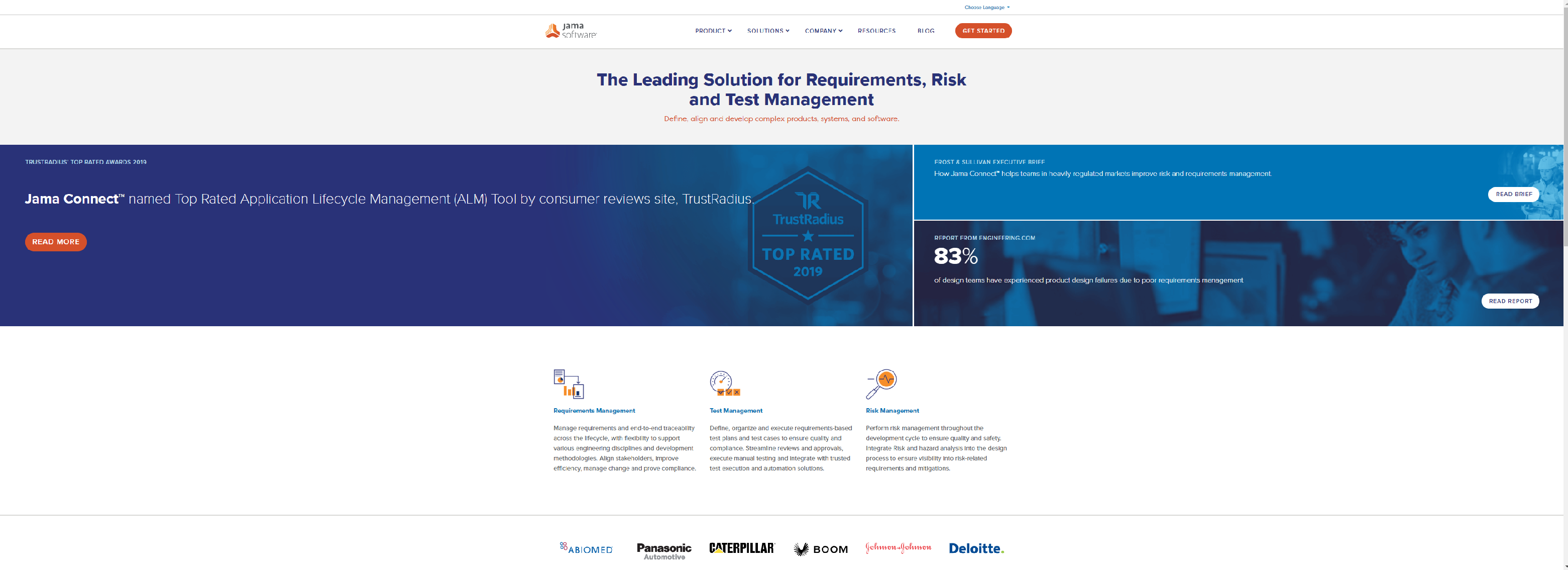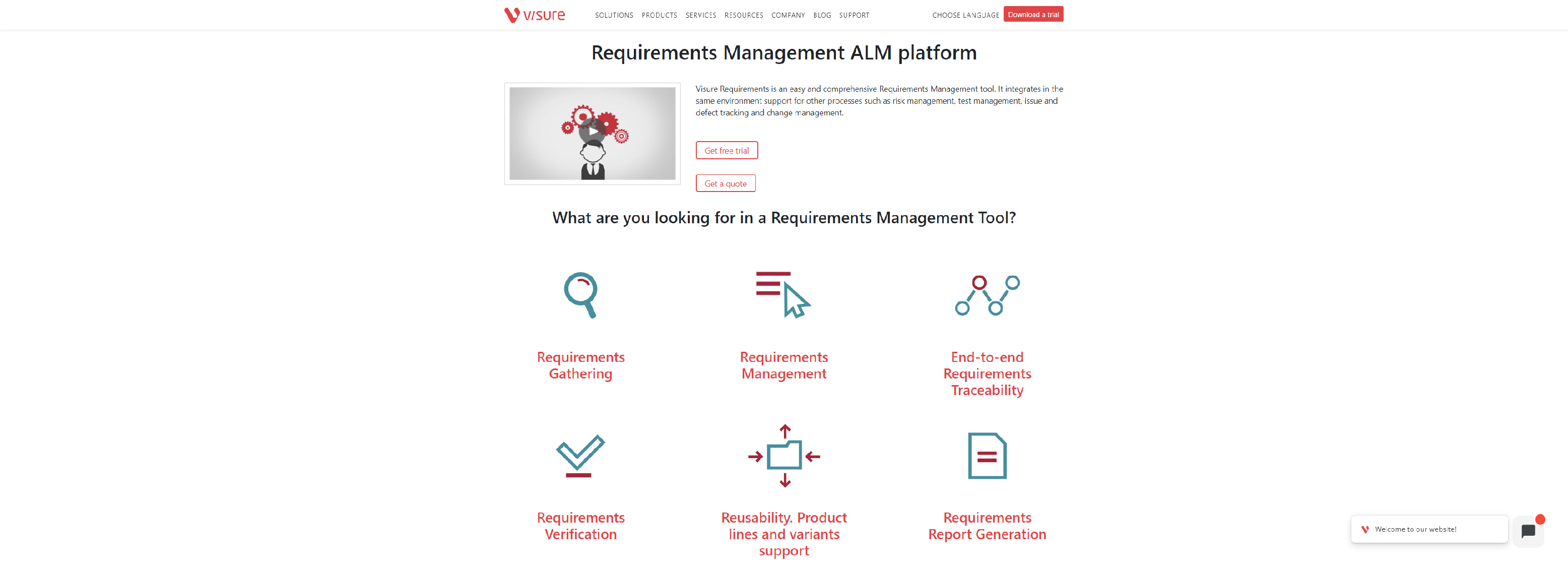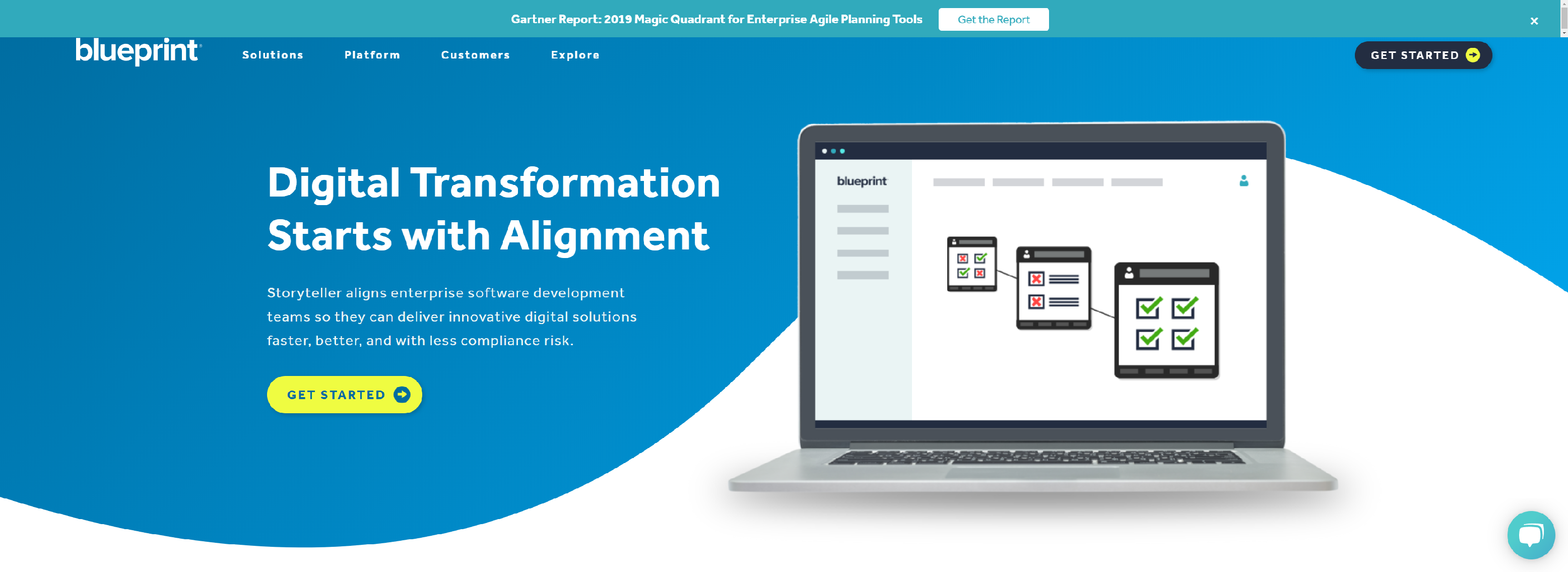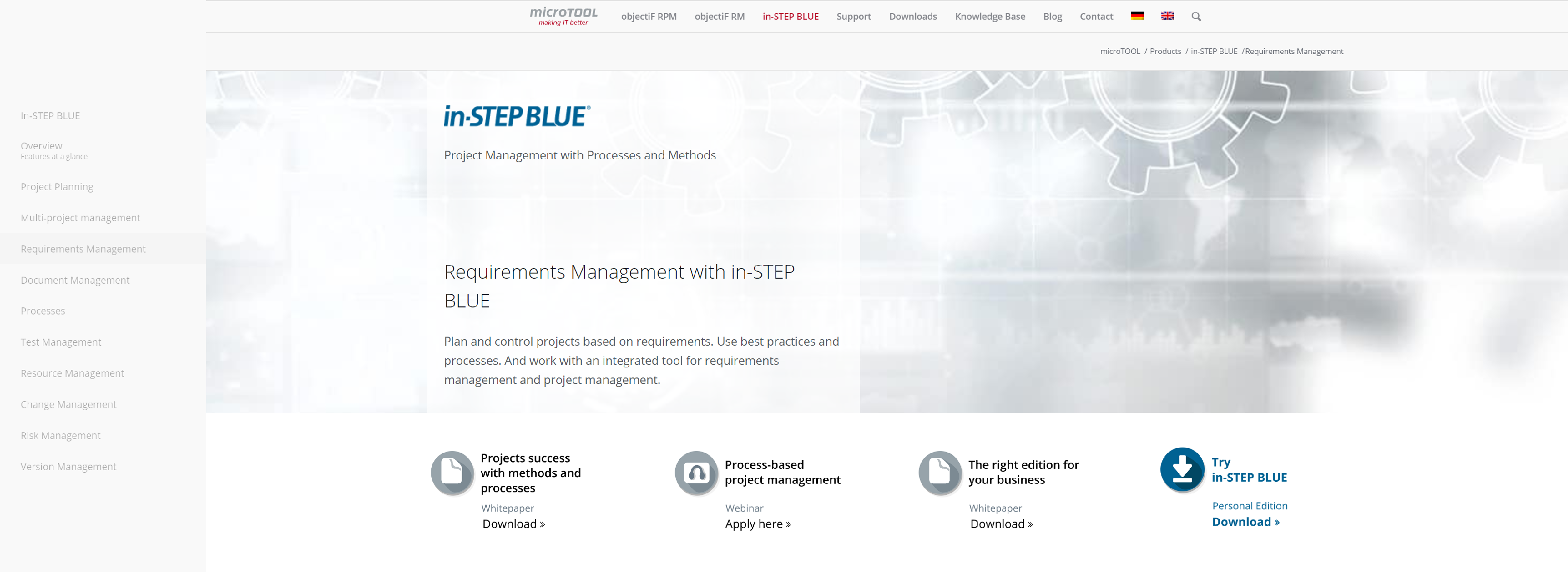Requirements Management is an ongoing process of evaluating the needs of end-users in balance against difficulty, feasibility, budget and schedule.
Using effective management techniques in your projects will result in better predictability, higher quality in the end product and a reduction of expenditures in producing your software.
Many project teams don’t manage requirements at all. They keep a whiteboard of ‘goals’, or a simple document or spreadsheet containing ‘requirements’, but actual management of requirements does not take place. New requirements get added without consultation of the team, deadlines are set without estimating the work involved and other disconnects occur between the different members of a development team. As we’ve seen, this results in projects which are over budget, delayed, and even cancelled because they cannot accomplish their goals.
By establishing a grip on requirements and managing them effectively, these disconnects can be repaired and lines of communication can be improved all along the ‘supply chain’ of software design. With a clearer view of the goal of the project, everyone involved can make better decisions, resulting in huge time and cost savings.
The Need for Requirements Management
The development of large, complex systems presents many challenges. Foremost among these is the ability to ensure a final product satisfies the needs of the users and provides for easy maintenance and enhancement during its deployed lifetime. Systems will often change and evolve throughout their life cycle, making it difficult to trace the implemented system against the original and now evolving user requirements.
Requirements help establish an understanding of the user’s needs, and provide the final yardstick against which implementation success is measured. Requirements management consists of information capture, information storage & management and information dissemination. Information management is at the heart of the requirements management problem and includes organisation, traceability, analysis, and visualisation.
Key to the success of any requirements management process is requirements traceability. Requirements traceability is a technique used to provide relationships between requirements, design and implementation of a system in order to manage the effect of change and ensure the success of the delivered systems. A survey of INCOSE members identified improved support for requirements traceability as the most critical need to be addressed by automated system engineering tools. For requirements traceability to be effective, it is necessary to associate requirements with information stored in a variety of system engineering tools.
What is Traceability?
Traceability sounds complicated, especially if it’s bi-directional traceability. For many organisations the vocabulary is a barrier to understanding and implementing traceability. If it’s not easy to talk about, one would think it’s a pain to implement.
Traceability is setting up relationships between items in your project that provide value to the team. A common scenario is to setup a relationship from the stakeholder request to the requirement and from the requirement to the design document.
Bi-directional traceability simply means the link goes two ways. If you can see that a requirement is related to a story card, you should see that the story card is related back to the requirement.
These relationships provide quite a bit of valuable information. First, if the project team needs to change the design, they know immediately which stakeholder to talk with. If the stakeholder changes their mind about the requirement, the team knows the exact requirement and design document that need to be updated.
You can get carried away with setting up relationships. For some teams, such as those developing life critical systems, tracing to the code level is critical. If something was changed in the software that’s flying the plane you’re in, you’d want to be absolutely sure the project team knew every line of code that was affected and what needed re-testing.
For the majority of teams, we suggest tracing between the most critical items on the project. For example, if you are on the hook for an RFP or contract with a client, trace from those items to features and on to use cases and test cases. This requires minimal time to setup and provides a great way to demonstrate that the software or product your team is building fulfills the original requirements – and was truly tested, especially if you integrate with an automated test tool. We suggest tracing to change requests as well. This way every feature being developed ties back to either the original contracted scope – or a change request. This is a great guard against dreaded and costly “scope creep”.
Another challenge with traceability is that it can be cumbersome to track manually. Unfortunately many of the enterprise RM tools continue to complicate things and make traceability difficult. For the most part these are old applications that have been bought and sold over the years so they’ve missed opportunities for usability updates.
What makes a good Requirements Management tool?
A requirements management tool or system is vital to making the tasks of requirements management controllable. Teams starting down the path towards requirements management often use a mixture of email, word processing documents, spreadsheets and sometimes simple static web pages. While they are better than nothing, they are generally insufficient for the task of even small projects. To better identify what is needed in a requirements management tool, it is better to examine the needs of the team as a whole. Surprisingly enough, this is capturing the requirements of the team!
Careful attention needs to be made to the process and technology neutrality stance of any tool. Many requirements tools either require or ‘strongly suggest’ you adopt a process ‘specifically tailored’ to them, or have a similar leaning towards a particular toolset. This does a disservice to the team, in limiting choices of how to work most efficiently. In many circumstances it can also imply additional licensing, training and consulting costs.
As human beings, we generally won’t adopt something that significantly changes our day-to-day operation. A tool which minimises interference with work habits will be far more successful than one, which imposes its own needs upon the team – the tool is here to work for you, not the other way around!
JAMASOFTWARE

Jama Software leads the field in product development software, offering requirements management, traceability, test management and maximum ease of use compared to other software platforms on the market.
- Have a single source of truth for clear visibility throughout the development process
- Iterate in real time for informed decision making and consensus
- Support multiple development methodologies and engineering disciplines
- Configure the platform to align to industry best practices
- Visualize how tests track back to requirements to prove quality and compliance
- Reuse validated requirements to quickly replicate features across products
KOVAIR

Automated development and fully-integrated Kovair Application Lifecycle Management (ALM) suite with integrated tool environment, quick data migration solution, centralized data repository and data synchronization REST API.
- Develop a Unified Requirements Management System
- Gather Requirements from Multiple Sources
- Import Requirements from Word documents
- Enrich Requirements with Detailed Specifications
- Organize Requirements in Folders and Sub Folders
- Maintain Version and Change history for audits
- Achieve Real-Time Collaboration with Different Stakeholders
- Draw Prototypes / Wireframes with Built-In Modelling Capability
- Review Requirements in a Collaborative Manner
- Ensure Compliance through End-to-End Traceability
- Automate Requirements Management Workflow
- Manage Requirements with Ease
REQVIEW

The requirements management tool for software and systems development where requirements matter.
- Reuse Requirements Specification Templates
- Capture Structured Requirements
- Manage Requirements
- Manage Traceability Links
- Manage Safety Risks
- Analyze Traceability
- Export Documents
- Track Changes
VISURESOLUTIONS

Visure is a leading provider of requirements management tools, including traceability, risk management, test management, bug tracking & standard compliance.
- Requirements Gathering
- Requirements Analysis
- Requirements Specification
- Requirements Validation
ORCANOS

Orcanos requirements management tools, system & software enables better requirements tracking, strong traceability and better regulation compliance.
- Requirements Management Tool for Medical Devices
- End-to-End Traceability
- Online Document for better collaboration
- MSWord Document Generator
- Hierarchic Requirements Management View
REQTEST
![]()
ReQtest is a cloud based requirements management, test management and bug tracking tool.
- Advance Requirements module
- Work with latest version of requirements
- Prioritize requirements
- Attachments to describe requirements clearly
- Powerful Reporting
- Requirements traceability
- Enhanced Jira connection
BLUEPRINTSYS

Drive your digital transformation with Blueprint’s Storyteller, the #1 tool to help enterprise teams deliver innovative products to market faster.
MICROTOOL

Requirements management software in-STEP BLUE: Plan and conduct projects based on requirements. With workflows, traceability, lifecycle and reports.
- Plan and execute projects with defined processes
- Manage all your projects simultaneously
- Skills, availability and workloads
- Integrating project management with requirements management
XEBRIO

Xebrio, an all-in-one project management suite, lays due emphasis on the cornerstone of project management i.e. Requirements.
- Gain End to End Traceability
- Unify and Centralize Requirements
- Define, Brainstorm, Review, and Negotiate Precisely
- Manage Your Project’s Risks
- Request Changes and Update Effortlessly
- Connect and Communicate Comfortably
IRISE

iRise combines the best prototyping tool with inline requirements management software – create wireframes and diagrams too.
- Capture requirements and user stories in context
- Drag and drop requirements management
- Capture exactly the information your team needs
- Create user flows, business process diagrams, and more
- Instant Documentation
- Be agile with customizable Scrum and Kanban views
- Review changes made to your requirements (and prototypes too) using the Audit tab